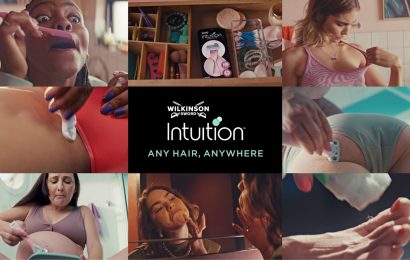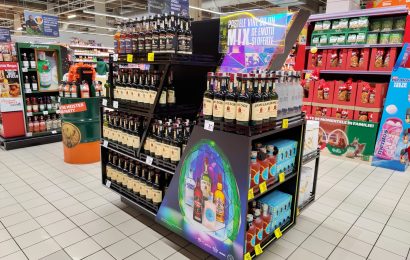When client’s products won’t sell, a solid brand might be missing from the equation
We’ve got a client with a problem. His Widgets won’t sell. He’s built a huge business based on selling Gaskets –he’s become number one Gasket producer in Russia, as a matter of fact. But now that he wants to sell widgets too, under the same logo. And he doesn’t understand why consumers are staying away in droves. We’re sitting together in his office and he’s holding up a box of Gaskets and a box of Widgets.
“Why won’t anyone buy my widgets?” He implores.
“Your problem” I say, “is that you don’t have a brand.”

A brand is not a logo!
Let’s be clear –when we talk about a brand, we’re not just saying logo or company name. We’re talking about ‘brand’ as the meaning your company stands for in customers’ minds. It is a fallacy to believe that customers spend time at the shelf making informed rational choices about what they are buying. Rather their subconscious minds make lightning quick judgments and decisions based on a number of factors, from the pack color choice, to the name, to news stories they remember about the company, or memory of an actor on a commercial they saw for the product. The sum of these elements –in fact the sum of all of these elements that a customer has ever had experience with – form an idea in their heads of what the brand stands for –its positioning. The brand becomes the ‘shorthand’ they will use to actually choose a product, or choose not to use a product. Once the subconscious brand has made its decision (or shortlist) based on these intangible factors, then the more slow-moving conscious mind steps in to confirm, deny, or post rationalize the decision.
Some brands are product-based (Brand X stands for XXX). It can be highly emotional (Brand Y is about love). It can even hurt you (Brand ZZZ is destroying the environment). The fact is that once a consumer has made up his mind about what your brand is –it becomes almost impossible to shake without prolonged effort. This is why the world’s biggest and most successful companies actively manage their brands through design, commercials, product experience, PR, etc. These companies understand that having a brand ‘positioned’ correctly in consumers minds is vital to their overall business strategy. Rather than constantly shifting, second-guessing, and reacting to every outside influence –these companies make decisions –communication, portfolio, product –based on how they fit into the brand.
The Consistent Quality trap
When we do workshops in Russia, we often do an exercise where we ask participants to tell us what they think certain international brands ‘stand for’. Regardless of the brand, whether it’s Apple, Dove, Starbucks, Absolut – the answer is almost always “Consistent or superior quality”. But the fact is that these brands aren’t (necessarily) superior to their competitors. Almost all products these days deliver a baseline of quality that was unheard of in previous decades. You can go on all you want about how Finlandia uses a unique process or ingredients different than Absolut –but the average customer won’t be able to tell them apart. You can gush over the quality of Starbucks coffee over Chocoladovna’s –but the average consumer will think they’re both fine. So get it out of your head that quality alone is what will drive consumers to your products. The days of “Brand XXX is superior because it offers consistent quality” are over. Consistent quality isn’t what separates you from the competition anymore. It’s what makes you indistinguishable from them.
For people who have built successful businesses by offering higher quality or innovative products, this can be a hard pill to swallow. Over the last 20 years, you’ve probably seen your low-quality competitors fall away and now you stand alone as master of your category. However, now we are entering a new age. The playing field is level again and quality is the baseline or ‘ticket to play’. Some of you, like our client above, are wondering why you can’t translate your success in your current business into successes in other categories. Or you’re finding your leadership positions eroded by more and cheaper competition. What is going to give you the edge in this new environment?
Today, Brand is the key to growth
Looking back to the international brands we mentioned before, Apple, Starbucks, Finlandia, Dove, BMW. They all use their brands to create connections to consumers that go beyond the products they offer. The ‘positioning’ they create in consumers minds leaves them room to stretch portfolios and bridge categories.
The Starbucks brand is built around the concept of the ‘3rd place’ – an alternative to home and work which is welcoming, comfortable, and where a certain type of person (their target customer) can always feel relaxed. The brand defines how their shops will look, what products they will carry, what type of music is played, and how their employees behave. The brand is the reason they can get away with selling not only coffee, but music, headphones, and pillows. This brand is the reason they’ve built such a loyal following of ‘fans’. And, the brand is the reason they can now ‘stretch’ the brand into evening cocktails –as they’re begun rolling out in the US. A brand built on quality coffee could not credibly open an evening cocktail bar. But a brand built on the 3rd place where people can get away from work and home –certainly can.
The Apple brand is built on the idea of making technology easy to love. For users and followers of Apple, that means simplicity, ease of use, beauty, and intuitiveness. This idea of the Apple brand is visible in every aspect of the company –from intuitive interfaces and clean designs of their products, to their minimalist advertising and high quality packaging. This clearly defined brand has allowed them to move from personal computers, to MP3 players, to mobile phones without missing a beat or confusing consumers. This clearly defined brand made the move into retail easy and successful, since the values and benchmarks were essentially laid out in the brand. By following their brand (rather than simply doing what everyone else was doing) Apple re-defined the technology retail experience.
Virgin is a brand that ‘stands’ for revolution. As such they can basically move into any category they want and, as long as they shake it up and turn the existing user experience on its head, they will have customers and believers willing to give them a chance. Obviously this would not be possible if Virgin only stood for popular music in people’s minds (their original business was a record shop)
Dove’s brand is built on the insight that women feel oppressed by the beauty standards being set by the cosmetics industry and society in general. Dove’s brand is based on raising self-esteem and accentuating a woman’s existing beauty rather than thinking of looks as something that needs to be ‘fixed’ by their products. This brand positioning keeps them very relevant in their consumers minds. It allows them to stay in the conversation with their consumers by putting out engaging, thought-provoking viral campaigns (such as sketch artist). The brand also helps Dove re-shape how they communicate and name their products. Dove’s anti-aging products, for instance, are called ‘Pro-Age –because beauty has no age limit’ –solidifying their commitment to celebrating and accepting beauty in all its non-traditional forms.
Shifting Paradigms
Evolution involves a paradigm shift in thinking. To thrive today, you need to shift thinking from ‘I’ve got a factory and I need to pump out cheaper or higher quality products’, to ‘I’ve got a brand and I need to act in ways that support that brand.’ To think in the former way is to watch your business stagnate and slowly erode as other producers match your quality and eventually drive your prices down to the point you are no longer making money. To think in the latter way is to see your brand resist this ‘race to the bottom’ as you develop loyal consumers and are able to expand your business into new categories.
There are some companies in Russia who already have ahead-start. One brand that leaps to mind is Russky Standart, which already evokes strong ideas transcending Vodka. We could imagine the Russky Standart vision of Russian Opulence would translate well into other (traditionally Russian, traditionally luxury) categories such as Caviar, Furs, or Crystal –all of which, if managed correctly, would reinforce the brand positioning. (whereas Gin –a traditionally English spirit –would likely erode the positioning they’ve built so successfully)
For other brands, such as our client above, the road is a bit longer since he still needs to find the insight that will lead to what his brand stands for. However the prognosis is good. Because he is acting now and has recognized the need to define his brand before his competition does, his road will be much easier, simpler, and free of obstacles. For those that insist that brand is not important, or wait too long to come around to brand thinking, the future will be much trickier to navigate.
What now?
For those of you reading this article that have built successful businesses in the old paradigm, now is the time to exhibit the leadership skills that will make those businesses viable under the new paradigm. ‘Brands’ do not just happen. They are created, nurtured, and led by strong personalities who have the vision and leadership skills to ensure that the course is adhered to. Richard Branson and Steve Jobs immediately leap to mind when we think of real brand builders. This level of commitment (and fanaticism) should be the benchmarks for those that now wish to do the same with their own businesses. Often we say that anyone with a factory can be an owner. It takes a true leader to make a brand.
Do you feel you have a firm grasp of what brands are and how they work? If not, it may be time to educate yourself. Do your people –including your agencies –understand your business as selling product or managing brands? If it’s the former, you might want to surround yourself with different expertise. Do you have the self-discipline to thing long-term strategy rather than short-term reaction? If you’ve answered these questions in the affirmative, then you’ve taken the first steps to be the kind of visionary leader that Russia’s markets now need.
Editorial by Douglas Kaufman, Head of Communications, Cocoon Group
Who is Douglas?
Originally from Boston, Massachusetts, Douglas has lived in Prague for over 17 years. Over the course of his career, he has worked in business management, film production, internet marketing, B2B advertising, and graphic design, before finally settling in brand strategy.
As a brand strategist, he has put his eclectic experience and knowledge to use over the past 7 years building and running the Cocoon Group strategy department, which prides itself on taking a new approach and fresh perspective to clients’ branding needs throughout the CEE region. In the last year, Douglas took over a new department position as Head of Communications Cocoon Group.
Clients that have taken advantage of this fresh perspective include Coca Cola, P&G, Philip Morris, Nestle, Unilever, Hilton Hotels, and other well-known local and international brands.
Douglas’s areas of expertise includes innovation solutions, portfolio management, brand image modernization, brand building.
Cocoon Group is an international award-winning branding agency offering a full selection of branding services: from strategic expertise through 2D and 3D design, artwork, mock-ups, pre-press services, and print management. Cocoon Group network has offices in Prague, Moscow, Bucharest and The Hague, working for a variety of clients, including the world’s leading companies as well as regional and local players.






